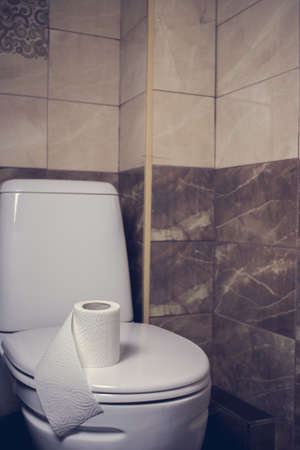Introduction to Composting Toilets in the UK
If you and your family are dreaming of a greener camping experience across the UK, composting toilets could be your new best friend. Composting toilets are innovative, eco-friendly alternatives to traditional flush toilets, designed to turn human waste into safe, useful compost. Over recent years, British campers have embraced these clever loos as they seek more sustainable ways to enjoy the countryside without harming it. But what makes composting toilets so appealing? For starters, they use little or no water—perfect for remote campsites where every drop counts. These toilets also help reduce pollution and lower the environmental impact of camping trips, all while teaching children valuable lessons about caring for our planet. As families explore the rolling hills of Yorkshire or pitch up by a quiet Scottish loch, composting toilets offer peace of mind that your adventures leave nature as beautiful as you found it. By choosing this practical solution, you’re not only making camping simpler but also joining a growing movement of UK campers who care deeply about sustainability and protecting our wild spaces for generations to come.
2. How Composting Toilets Work
Composting toilets are a fantastic way for families to enjoy sustainable camping in the UK, all while looking after our beautiful countryside. But how exactly do they work? Here’s a simple, family-friendly guide to help you understand these eco-friendly loos and how they differ from the traditional flush toilets we find at home.
The Core Principles of Composting Toilets
At their heart, composting toilets use natural processes to turn human waste into safe, nutrient-rich compost. Instead of flushing everything away with lots of water, these clever toilets break down waste using oxygen, helpful bacteria, and sometimes materials like sawdust or coconut coir. This means no need for plumbing or chemicals—just nature doing its thing!
How It Works: Step by Step
| Step | What Happens? |
|---|---|
| 1. Use the Toilet | You go as usual—but instead of flushing, you may add a scoop of sawdust or similar material. |
| 2. Separation | Many composting toilets separate liquids from solids to help with faster composting and less smell. |
| 3. Natural Breakdown | Bacteria and air work together to break down waste over time, creating compost. |
| 4. Safe Compost Removal | After several months, what’s left is a safe, earthy compost that can be used on non-food plants. |
Eco-Friendly Impact for UK Campers
Composting toilets are brilliant for the environment. They save water (crucial during dry British summers), prevent pollution of rivers and lakes, and produce zero chemical waste. Plus, they encourage us all to think about where our waste goes—something that’s very important when camping in some of the UK’s most sensitive and stunning locations.
Composting Toilets vs Traditional Toilets: What’s Different?
| Feature | Composting Toilet | Traditional Flush Toilet |
|---|---|---|
| Water Usage | No water needed | Uses up to 9 litres per flush |
| Chemicals Used | No chemicals required | Often uses cleaning chemicals |
| Sewage System Needed? | No sewage connection required | Requires sewage pipes and treatment plants |
| Environmental Impact | Makes compost, saves resources | Create waste that must be processed elsewhere |
| Suitability for Camping? | Ideal for off-grid sites across the UK | Difficult without infrastructure |
A Family Conversation Starter:
If you’re camping with children, talking about composting toilets can be a fun way to learn together about how we care for nature. You might ask: “What happens to our wee and poo after we flush at home?” and then explore how camping loos help keep our wild places clean and green. It’s an easy way to encourage everyone—young and old—to become champions for sustainability on every UK camping adventure!
![]()
3. Choosing the Right Composting Toilet for Your Camping Trip
When it comes to selecting a composting toilet for your UK camping adventure, making the right choice ensures comfort and compliance with local standards. British weather is famously unpredictable, so its wise to look for models that function efficiently in cooler, damp conditions commonly found from Cornwall to the Lake District. Some families prefer urine-diverting toilets because they handle moisture well and reduce odours, a practical consideration when you’re dealing with a classic British drizzle.
Understanding UK Regulations and Campsite Rules
Before packing your composting loo, check the specific requirements of your chosen campsite. Many UK family campsites require portable toilets to be self-contained, leak-proof, and not discharge waste onto the ground. Its also important to choose a model with proper waste storage that can be emptied at designated points, as ‘wild’ disposal is prohibited across most of Britain’s countryside and National Parks.
Features to Consider for British Families
- Insulation: Select models with insulated chambers for year-round use, especially if you plan on autumn or winter trips.
- Ease of Transport: Lightweight, compact designs are ideal for family campers who want to minimise setup hassle.
- Child-Friendly Options: Look for toilets with sturdy bases and easy-to-clean surfaces; some brands even offer child seat adapters perfect for little ones.
Popular Models Among UK Campers
The Kildwick MiniLoo is a favourite among eco-conscious families due to its portability and reliable separation system. The Natures Head, while bulkier, is praised for its robust design—ideal for longer stays or larger family groups. Remember, whatever you choose, always bring along biodegradable liners and compostable cleaning products to keep your footprint light and leave nature as you found it.
4. Setting Up and Using Your Composting Toilet Safely
Bringing a composting toilet on your UK camping adventure is a wonderful way to stay eco-friendly and comfortable, but setting it up safely is key for peace of mind—especially if you’re camping with children. Here’s a friendly, step-by-step guide to help your family get started, keep things clean, and ensure everyone feels at ease.
Step 1: Choose the Right Spot
Select a flat, stable area away from water sources (at least 50 metres) to prevent any contamination. Look for natural privacy—perhaps behind some bushes or set up a pop-up privacy tent. This helps everyone feel safe and secure when using the loo.
Step 2: Assemble With Care
Follow the manufacturer’s instructions closely. Most UK composting toilets are simple to put together:
| Part | What to Do |
|---|---|
| Main Unit | Place securely on level ground; check stability |
| Compost Chamber | Insert as instructed; line with biodegradable liner if required |
| Ventilation Pipe | Attach and direct away from living/cooking areas for fresh air |
| Seat/Lid | Ensure it fits snugly and can be closed easily after use |
Step 3: Add Bulking Material
Sprinkle a generous layer of sawdust, wood shavings, or coconut coir in the chamber. This helps with odour control and starts the composting process. Keep a handy container nearby for easy access after every use.
Step 4: Easy-To-Follow Use Instructions for All Ages
- Before Use: Explain gently to little ones how the toilet works—no flushing, just sprinkle more bulking material afterwards.
- During Use: Sit comfortably, do your business, and remind everyone not to drop any rubbish or wipes inside (just toilet paper).
- After Use: Each person should add a scoop of bulking material. Close the lid firmly to keep smells at bay.
Step 5: Simple Daily Maintenance Routine
| Time of Day | Action Needed | Why It Matters |
|---|---|---|
| Morning/Evening | Add extra bulking material if needed; check chamber level | Keeps odours away & ensures smooth composting |
| After Every Use | Scoop in bulking agent; close lid tightly | Pleasant experience for all users; promotes hygiene |
| End of Camping Trip | Cautiously empty compost chamber into an approved waste facility or take home (if local rules allow) | Makes setup ready for next adventure; keeps nature pristine! |
A Few Reassuring Tips for Families:
- If you’re unsure about handling waste, many UK campsites have dedicated disposal points—just ask at reception.
- A child-friendly step stool can make things easier for little legs.
- Hand sanitiser and biodegradable wipes nearby help everyone stay clean and confident.
- If you notice any leaks or strong odours, check seals and add more bulking material promptly—it’s usually an easy fix!
This gentle approach means everyone, from curious toddlers to grandparents, can enjoy sustainable camping in comfort—together creating lovely memories in the great British outdoors.
5. Composting Toilet Etiquette in the British Countryside
When exploring the beautiful British countryside, it’s essential to treat both nature and fellow campers with respect—especially when using composting toilets. Practising good etiquette ensures everyone can enjoy our green spaces, from the rolling hills of the Lake District to the sandy coasts of Cornwall. Here are some practical tips for considerate composting toilet use, following UK environmental guidelines and keeping our wild places welcoming for all.
Be Mindful of What Goes In
Composting toilets work best when only natural waste and approved compostable materials are added. Always follow site instructions—typically, only human waste, loo paper, and provided sawdust or bulking agents should go in. Avoid flushing wet wipes, sanitary products, or plastics, as these disrupt decomposition and harm the environment.
Keep It Clean for the Next Camper
After use, sprinkle a scoop of sawdust or other cover material into the loo. This helps with odour control and supports the composting process. Wipe down surfaces with provided eco-friendly sprays or wipes if necessary, and always close the lid securely to keep smells at bay and insects out.
Follow Local Guidelines
The UK has strict regulations around camping sanitation to protect wildlife and watercourses. Use designated composting toilets wherever available instead of going ‘wild’. If you’re responsible for emptying a portable system, do so at authorised disposal points, never in hedgerows or streams.
Mind Your Manners
If you’re sharing facilities on a campsite or at a wild spot, be considerate of others waiting their turn. Leave everything as you found it—or even better! If you notice supplies running low (like loo roll or sawdust), let your host know or top up if possible.
Leave No Trace
Finally, embrace the “leave no trace” ethos: pack out everything you bring in (except what belongs in the composting toilet!), dispose of rubbish responsibly, and help keep Britain’s countryside pristine for future explorers.
By following these simple yet important guidelines, we can all play our part in protecting nature while enjoying sustainable camping adventures across the UK.
6. Dealing with Compost and Waste in the UK
Taking care of composted waste is an essential part of using a composting toilet responsibly, especially when camping in the beautiful British countryside. Let’s explore how you can manage and dispose of your compost safely and legally, while keeping the environment happy for everyone.
Understanding UK Laws and Local Council Advice
First things first: it’s important to know that each council in the UK may have its own set of guidelines for handling human waste, even if it has been composted. Before your camping trip, check with the local authority for any specific rules or recommendations about compost disposal. The Environment Agency provides national guidance, but always double-check for any local variations to keep everything above board and neighbourly.
Safe Storage and Handling Tips
After your adventure, you’ll need to store your composted waste securely until it is fully matured—this usually takes at least 12 months. Use a sealed, sturdy container to avoid leaks and odours, placing it well away from water sources and food-growing areas. Always wear gloves when handling waste to protect yourself and others, and remember to wash hands thoroughly afterwards. These simple steps help keep your family safe and comfortable on site.
Responsible Disposal Methods
Once your compost has matured, you have a few options:
- Home Composting: If you have a garden at home (and the space), you can add mature compost to ornamental plants or non-edible trees—never use it on fruit or vegetables.
- Council Green Waste Facilities: Some local councils allow disposal of mature humanure at their green waste centres—always ask before dropping off!
- On-site Burying: With landowner permission and following DEFRA guidelines, you may be allowed to bury mature compost away from watercourses and public footpaths.
A Family-Friendly Reminder
Teaching children about caring for nature is a wonderful part of camping together. Make sure little ones understand why we handle waste carefully: it’s not just about rules—it’s about keeping our parks, forests, and beaches clean and safe for all families who visit after us.
What Not To Do
Please never dump raw or partially composted toilet waste in hedgerows, ditches, rivers, or public bins. This can harm wildlife and risk hefty fines from local authorities. Stick to responsible methods so everyone can enjoy Britain’s great outdoors for generations to come.
Together, by following these simple steps, we can all play our part in protecting the stunning landscapes of the UK—making camping a safe, sustainable adventure for every family.
7. Family Stories and Top Tips for Happy, Sustainable Camping
There’s something truly special about gathering around a campfire after a day of exploring the British countryside with your loved ones. For many UK families, introducing a composting toilet to their camping set-up has been a game-changer—making trips not only greener but also easier and more enjoyable for everyone. We’ve collected some heartwarming stories and tried-and-tested tips from families who have embraced sustainable camping with composting toilets, so you can feel confident and inspired on your own adventures.
Feeling at Home in Nature
The Johnson family from Cornwall shared how their children once dreaded late-night dashes to distant campsite loos. Now, with their compact composting toilet tucked into the corner of their tent, midnight trips are no longer an ordeal—and the kids even take pride in helping with the eco-friendly emptying process. “It’s become part of our camping ritual,” says mum Claire, “and it’s sparked so many good conversations about caring for nature.”
Tip: Keep It Simple and Fun
For younger campers, make using the composting toilet a fun part of the adventure. The Smiths from Yorkshire bring along colourful biodegradable wipes and let each child decorate the loo with stickers (removable, of course!) at the start of every trip.
Top Tips from UK Families
- Choose the right size: Compact models work best for smaller tents, while larger families might prefer a sturdier unit for convenience.
- Get everyone involved: Assign simple tasks—like topping up sawdust or checking supplies—to make children feel responsible and included.
- Plan ahead: Always pack enough eco-friendly toilet paper and hand sanitiser. Many families keep a small ‘toilet kit’ ready to grab before each trip.
Tip: Celebrate Sustainable Wins
The Evans family from Wales love comparing how little waste they generate compared to traditional campsite toilets. They even keep a logbook (pun intended!) of their composting milestones—a lovely way to track progress and celebrate small successes together.
A Community of Campers
If you’re new to composting toilets, remember you’re not alone! Join local camping groups or online forums where seasoned families share advice and cheer each other on. As more campers choose sustainable options across the UK, every little change adds up to bigger environmental wins—and plenty of happy memories under the stars.
Together, Let’s Make Camping Greener
Your family’s journey towards sustainable camping can be as rewarding as the destination itself. With these warm stories and practical tips in mind, you’re ready to embrace composting toilets confidently—making every trip an opportunity for fun, learning, and connection with both nature and each other.


